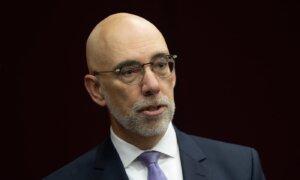TD Bank predicts that the new mortgage rules designed to make it easier for first-time buyers to enter the market could also lead to an increase in house prices.
New federal government mortgage rules coming into force in December to increase accessibility for first-time home buyers could be “blunted” by a related increase in home prices as demand rises, says a TD Bank economist.
First-time homebuyers and buyers of new builds will also be eligible to take on 30-year mortgages. The maximum amortization period was previously 25 years. The two new measures come into effect on Dec. 15.
“These measures should offer a lift to Canadian home sales and prices next year,” said Sondhi. “However, their impact will be blunted by an array of factors, including the affordability erosion induced by their implementation.”
Sondhi said TD doesn’t see the measures generating a housing boom but will contribute to giving a boost to the market as interest rates continue to fall in 2025 and the economy gradually improves.
In practical terms, Sondhi wrote that a typical first-time homebuyer buying a house would see purchasing power increase by around 9 percent, which he called a “meaningful difference.”
“However, the impact on the market will be blunted by the fact that it only applies to first-time homebuyers who take out an insured mortgage,” he wrote.
Citing Bank of Canada data, Sondhi noted first-time homebuyers represent around 44 percent of total buyers.
The TD economist also raised questions about how many households can benefit from the insurance cap increase to $1.5 million.
“For instance, a buyer who puts down the new minimum down payment required to buy a home valued at $1.05 million will need a household income of about $170-180k to meet typical qualification thresholds,” he wrote. “This would be difficult for many first-time homebuyers.”
Canadians have seen record home prices during the pandemic as Ottawa increased spending dramatically and the Bank of Canada injected liquidity to kickstart the closed-down economy. Inflation subsequently skyrocketed, followed by aggressive tightening by the central bank to tame inflation.
Some of the shock will be lessened, say experts, if the Bank of Canada continues on its current rate-cutting path, which has been solidified by the latest inflation reading of 1.6 percent for September.





